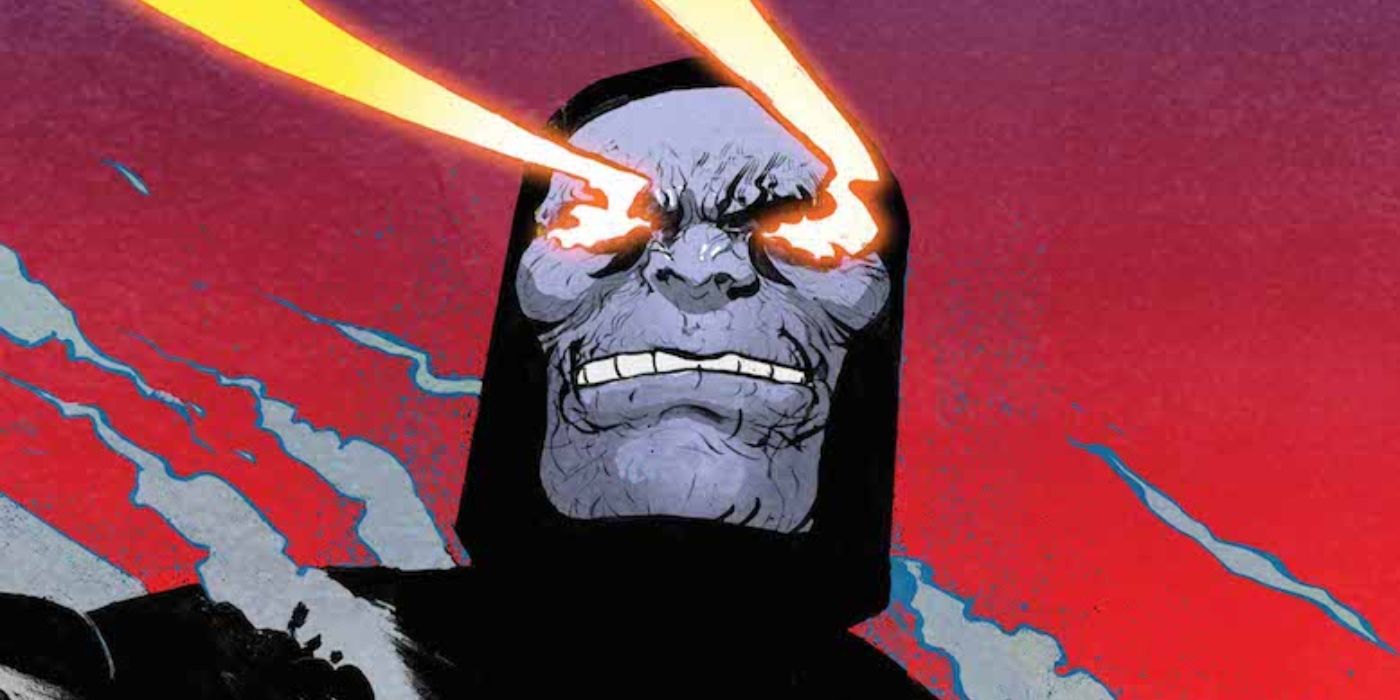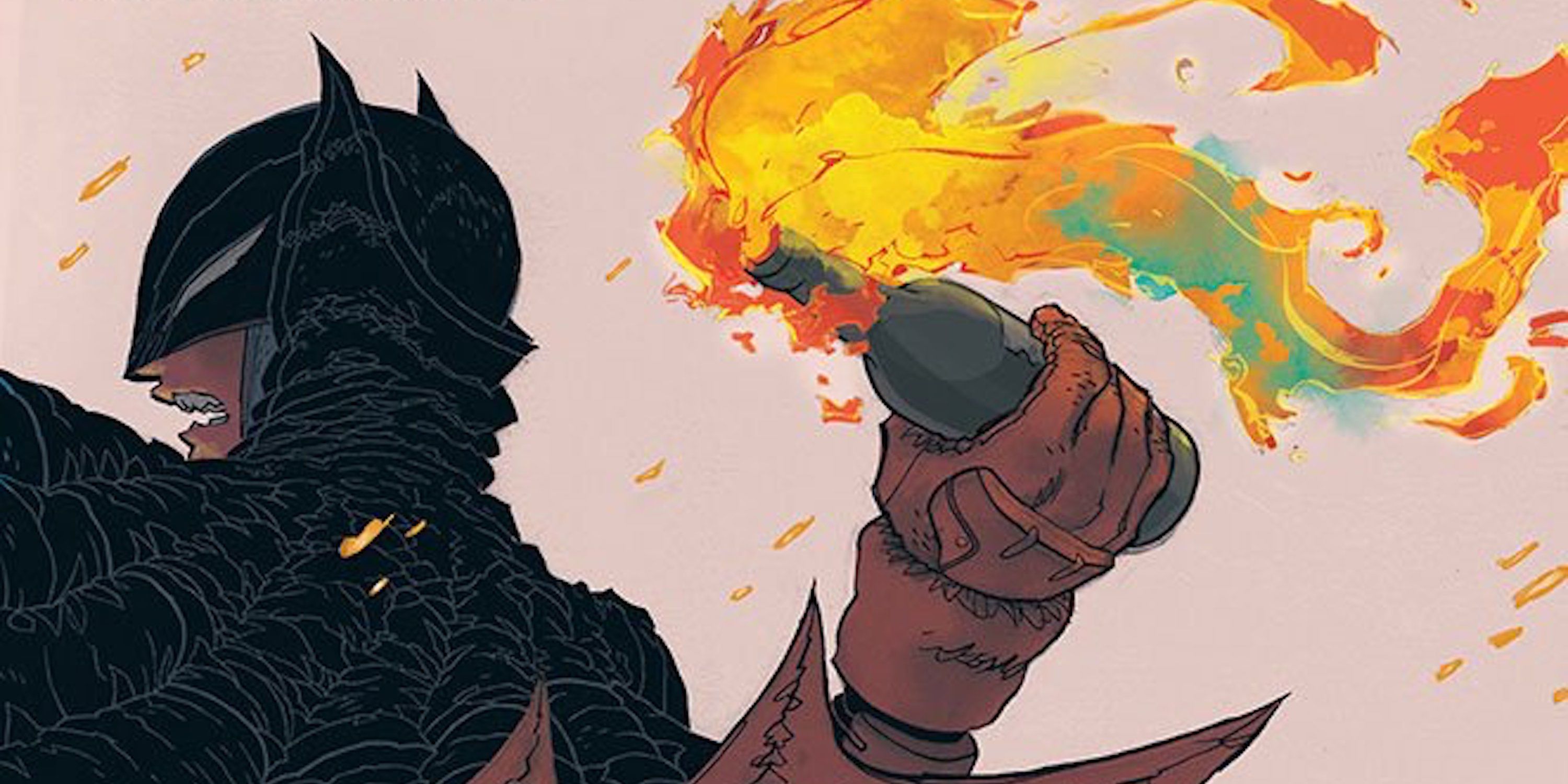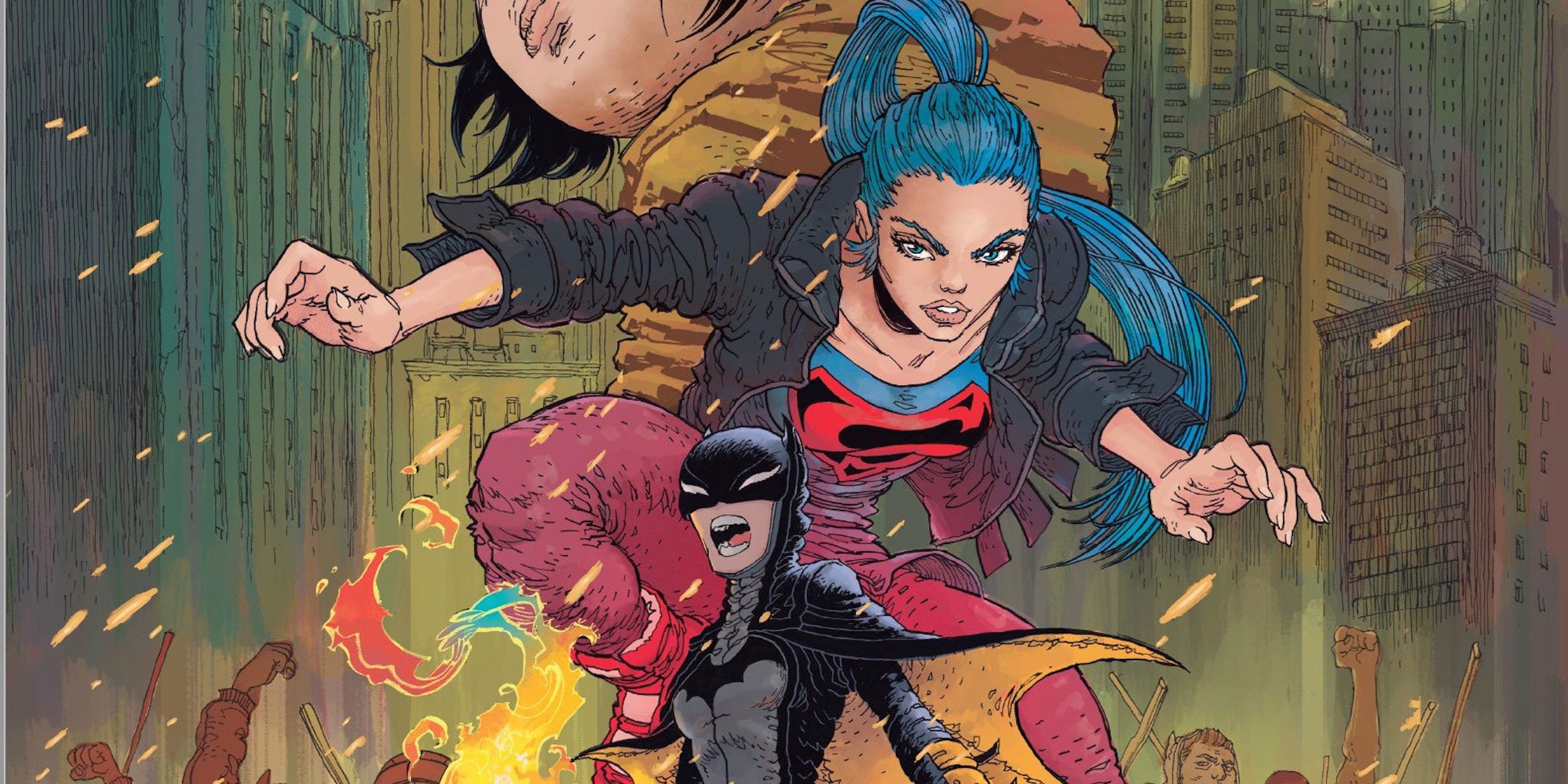WARNING: The following contains spoilers for Dark Knight Returns: The Golden Child #1, by Frank Miller, Rafael Grampá and Jordie Bellaire, on sale now.
These are strange times. Strange and bleak. Every day seems to bring more corruption, ignorance and bigotry to light and it'll only end when the masses act. That is largely what Frank Miller and Rafael Grampá attempt to convey with the politically charged DC Black Label release, Dark Knight Returns: The Golden Child, which funnels the most prominent issues facing the world today through battles involving Batwoman and Lara and Jonathan Kent.
With a plethora of intentionally blatant allusions, Miller and Grampá touch upon everything from climate change to current sociopolitical tensions. The first few pages of the comic present a conflict between detractors of a corrupt, unnamed mayor -- unmistakably representing U.S President Donald Trump -- and the politician's supporters, depicted as chaos-causing rioters in clown masks.
Throughout Trump's presidency, there have been numerous protests both within the United States, and beyond its borders. Chicago, which saw a rally of roughly 6,000 participants back in 2016, was met with protests once again during the president's visit in October. Similarly, the U.S leader was met with a sizeable protest during his visit to London, where participants, which included NHS medical workers and more, expressed their rejection of his ideology. Those demonstrations and protests have seen the occasional conflict.
All of this is taken to an extreme in the graphic novel, but The Golden Child still captures the fiery essence of it all and quickly establishes the perspective of its creators. Miller and Grampá do not hold back on their critique of the current president in The Golden Child.
Soon after Darkseid and Joker are introduced, the Clown Prince of Crime toys with some campaign merchandise: hand puppets with the mayor's face on them. It is revealed that Darkseid and Joker have been orchestrating the entire election from the shadows, in much the same way that Russia allegedly influenced the U.S. election in 2016. This leads neatly into what the two supervillains really represent in Miller and Grampá's 48-page comic.
Joker represents chaos, as he always has in his appearances. However, Darkseid is another story. By nature, the New God represents a conquering force; He has always represented the threat of tyranny and corrupt ideology. That aspect of the villain is brought to the forefront in the graphic novel, and reinforced by elegantly implemented visual allusions to real-world regimes, like the Communist Party-controlled government of China.
Prior to its release, there was controversy surrounding the comic involving a variant cover, the Hong Kong protesters and their vocal detractors. What some Chinese readers disliked about the cover was that Batwoman was depicted using elements similar to the symbols and general characteristics of the Hong Kong protesters. It appeared as though Miller and Grampá, as well as DC Comics, were expressing support for the pro-democracy movement.
Well, if supporters of the Chinese Communist Party (CCP) were offended because of their interpretation of a variant cover, they're definitely not going to like the actual contents of The Golden Child.
A lot of the imagery in the comic bears a striking resemblance to the images coming out of the streets of Hong Kong, where protesters regularly clash with police through dense clouds of tear gas. The clown-like rioters in the comic clash with Batwoman and her simply-equipped militia in much the same way. In fact, aside from their weaponry, her team of fighters arguably resemble the Hong Kong protesters even more than she did on the controversial variant cover.
However, Batwoman and her militia don't appear that often. Most of the story centers on a battle between Darkseid and the Kent children -- an expression of totalitarianism versus what could be seen as a representation of democracy, or rather, the will of the people. That seems to be what The Golden Child is implying.
It isn't just because Darkseid is almost always enveloped in red during the battle or because he turns into an intangible and far-reaching force of evil. The way Darkseid is written can easily be interpreted as a representation of the autocratic Chinese government. The world he is trying to build is in line with the CCP's current way of thinking: that people should be subservient and "March... in lockstep... obedient to their gods."
Those who have observed the Chinese government's tactics from afar might also recognize its persistence in Darkseid when he tries to convince his enemies that they should join him willingly. At one point, mid-battle, Darkseid says, "Children, children... Can't you see that I'm the best friend you've ever had?" It's not unlike China's attitude toward the special administrative region of Hong Kong, if not other nations.
As if that wasn't enough, Darkseid briefly manages to gain control over Lara Kent, turning her into "a thing without a mind," before she eventually returns and continues the fight. It's reflective of the relationship between China and the territories it claims as its own.
Interestingly, when the titular golden child, Jonathan Kent, finally steps up to battle the New God, an enraged Darkseid vaunts, "Darkseid is the tiger force that powers all the universe." Now, this isn't the first time the character has referred to himself as the "tiger force," but in Miller and Grampá's graphic novel, it seems to take on new meaning, especially when interpreting Darkseid as a personification of dictatorships like the current Chinese government.
The phrase "paper tiger" ("zhilaohu" in pinyin) describes someone or something that looks far more powerful than it really is. It's actually an ancient Chinese expression that has only been used on the global stage in the last century. Where Chinese dictators once used it to demean foreign powers, in recent months, the phrase has been used by pro-democracy supporters in Hong Kong to describe the current Chinese government.
Darkseid, at least in his battle with the golden child, definitely appears to be depicted by Miller as a paper tiger, more so when Jonathan himself -- who is dressed in bright yellow -- comments, "You're not so tough after all," as he leaves the defeated supervillain at the mercy of Batwoman and her band of Hong Kong protester-esque fighters.
As with any piece of art, it's up to the individual observer to interpret its meaning. There are plenty of vastly different but equally valid interpretations of Darkseid and what he really represents in this comic. This is just one way of looking at it. However, it certainly seems to fit the end.
The conclusion of The Golden Child sees Darkseid kneeling before a gathering crowd led by Batwoman. The image of the protesters against a fallen would-be ruler fills the final few panels as Batwoman, the leader of these liberated minds, says to the supervillain, "We are thinking for ourselves now. Each of us. We're free. That's why we'll win. That's why we'll always win."
That's where the hopeful message of this otherwise dispiriting comic is finally conveyed. It's a call to action for everyone to wake up and stand against fascistic leaders, be they a sinister threat like the CCP or an antagonistic and unscrupulous president.
Dark Knight Returns: The Golden Child is written by Frank Miller and illustrated by Rafael Grampá with colors by Jordie Bellaire. The 48-page prestige format one-shot is on sale now from DC Comics.



